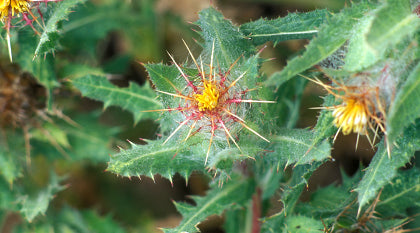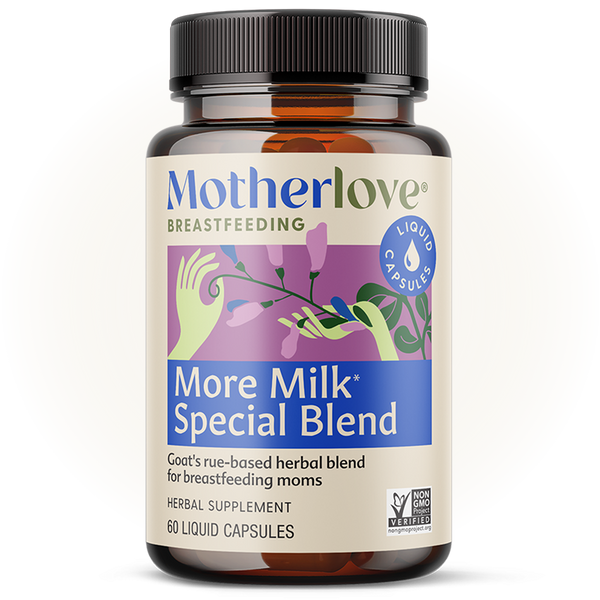Blessed thistle can easily be recognized by its yellow or purple flowers sprouting from spiked, fine-haired leaves. Native to the Mediterranean and western Asia, this herb can grow as tall as 30 cm in sunny, well-drained gardens. The plant and flowers are best harvested in the late mornings of summer months, after the dew evaporates and the sun has risen. Blessed thistle derives from the latin term, Cnicus benedictus. Cnicus refers to “knizein”, meaning “to torment”, speaking to the herb’s prickly leaves that often leave the harvester with a tingly feeling on their hands after uprooting the plant.
First used in Ayurvedic medicine throughout Europe and India, blessed thistle has been used to treat digestive issues for centuries. Consuming the plant in tea or tonic can slow digestion and help aid the loss of appetite and eating disorders. The plant’s leaves stimulate saliva and gastric juices allowing for a nourished body and diet. The bitter properties of the herb aid bile flow and hydrochloric acid production, thereby enhancing stimulation of nutrients and improving overall health. When ingested, the plant has a bitter taste but is often eaten as a vegetable or blended into a wine, juice, or tea. Blessed thistle flowers can be utilized as a substitute for artichokes or as a flavoring agent in dishes.
Blessed thistle was grown in monastery gardens throughout Europe, near holy sites and graves to ward off evil. “Blessed” or “holy” refers to the belief that the plant was a gift from a higher power. It was mentioned as a multi-purpose herb, capable of treating the plague and various illnesses. In spiritual settings, it has been used in purification baths, and can be considered a depurative, helping to purify the body of toxins. In ancient Greece, it was believed that the plant was capable of having “cure-all” remedies, able to deliver one from evil by those who wore the leaves around their necks.
Throughout cultures, blessed thistle has been used as a galactagogue, supporting mother’s milk supply and facilitating the breastfeeding journey. Although cultures have historically consumed the leaf raw, it is common to find this herb in teas. The herb is often blended with nettle, fenugreek, and fennel and is consumed by nursing mothers. For a more concentrated dose of the herb, tinctures and liquid herbal capsules are suggested. Liquid extracts maintain their quality for longer periods of time and have a high rate of absorbability.
Blessed thistle can be found in Motherlove’s More Milk line in both tinctures and liquid herbal capsules, supporting breast milk supply for nursing mothers. Our liquid extracts are made with only the highest quality certified organic herbs, picked and processed at peak potency.
Motherlove’s More Milk line:
More Milk, More Milk Plus, More Milk Plus Capsules, More Milk Plus Alcohol Free, More Milk Special Blend, More Milk Special Blend Capsules, and More Milk Special Blend Alcohol Free.




